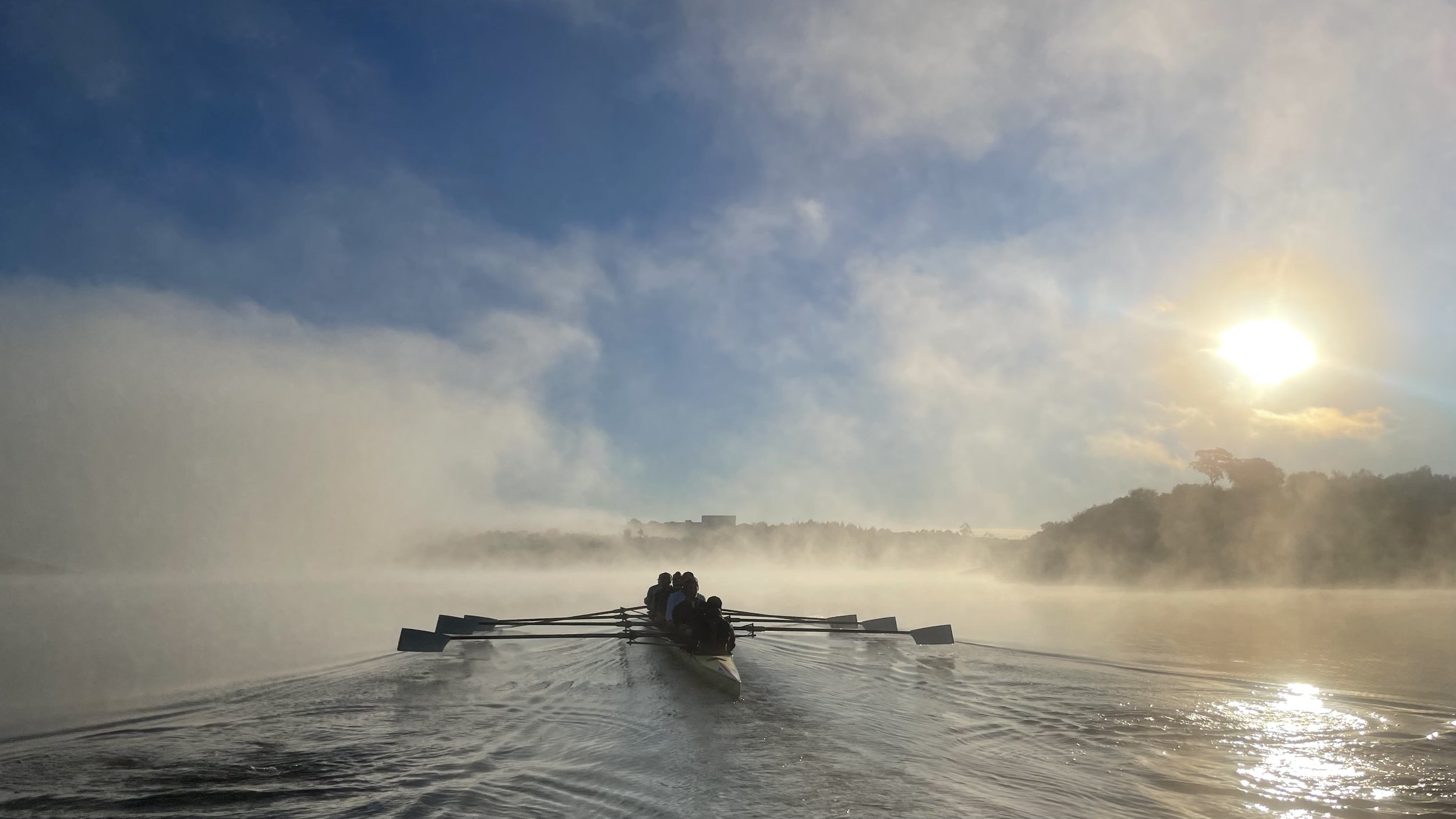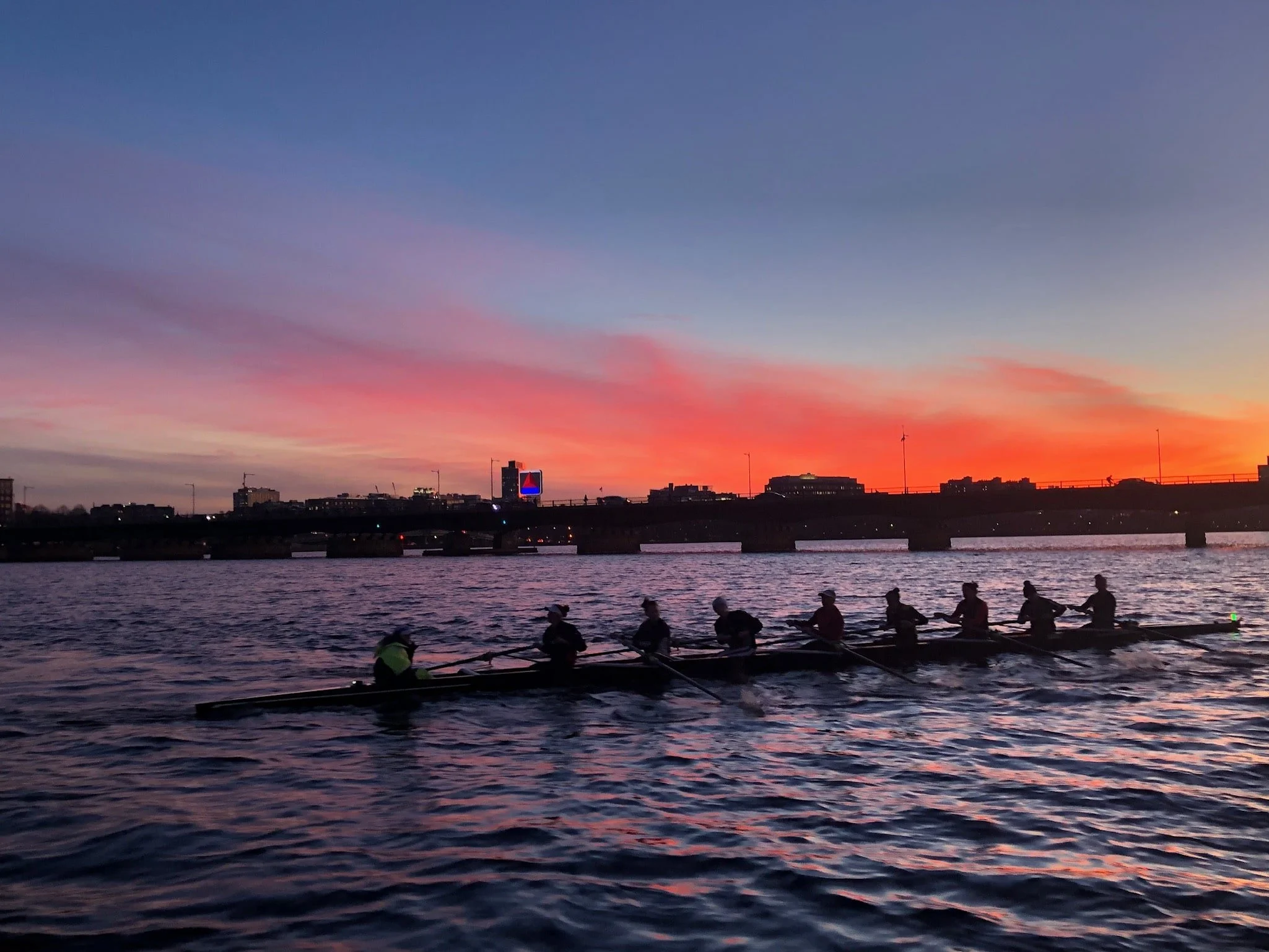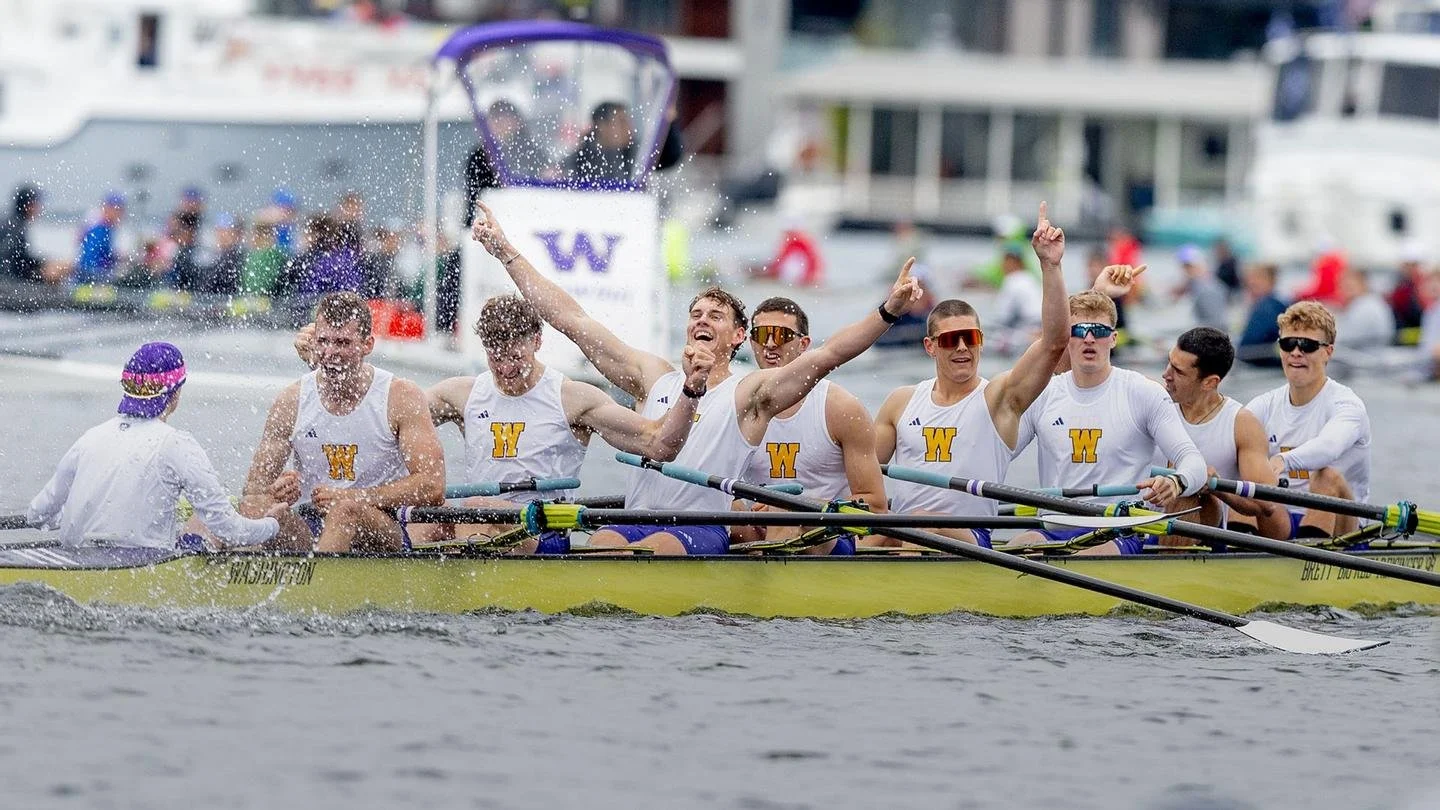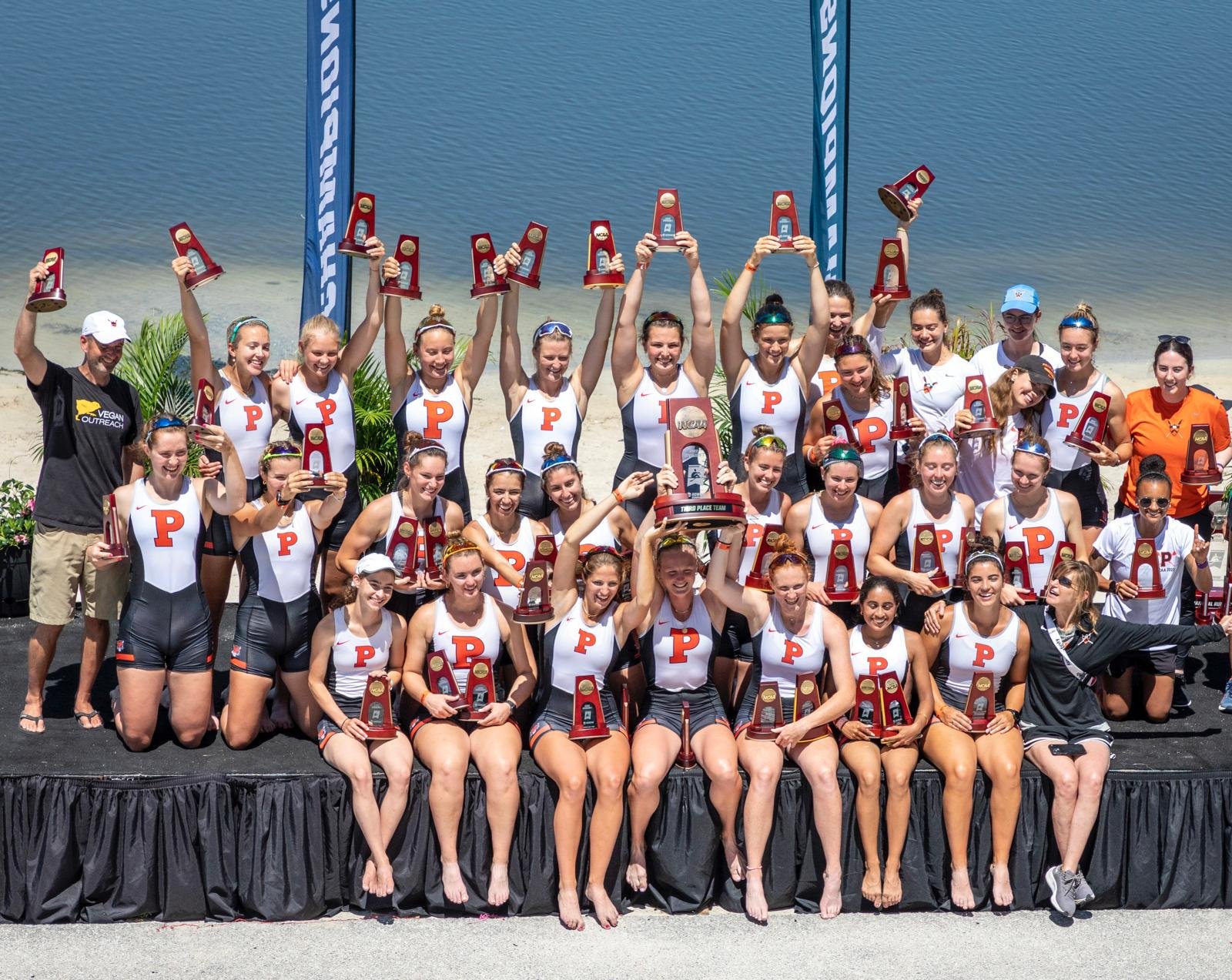A Guide to U.S. College Rowing
Want to Row in the college? Start Here.
Get seen by top college recruiters at our upcoming Talent ID Camp.
Rowing is the oldest college sport in the U.S. with the first race in 1852 between Yale and Harvard. Many of the top ranking U.S. colleges foster strong rowing programs that attract the top rowers from around the world. However, there is a wide array of rowing programs that offer a home for all levels of rowers. Colleges coaches choose prospective athletes to join their rowing programs based on their athletic ability, academic ability and personalities.
Rowing teams are large with as many as 70 members on a men’s or women’s heavyweight rowing team. On average Division 1 rowing teams have roughly 39 athletes on a scholarship, but some teams have up to 50 athletes receiving athletic aid. Rowing has some of the highest levels of athletes receiving scholarships.
Key college rowing facts:
2025 National Champions:
Heavyweight Women; Stanford
Heavyweight Men; Washington
Lightweight Women; Princeton
Lightweight Men; Harvard.
Number of Division 1 rowing teams: Men 37, Women 88
Total number of rowing teams: Men 125, Women 183
Scholarship limit per team: Women (D1) 68 per year, Men: no official limit
Women’s teams with the most national championships: 7 (titles) Brown, 5 Washington, 4 UC Berkeley (Cal), 3 Stanford/Texas/Ohio State, 2 Virginia, 1 Harvard
Men’s teams with the most national championships: 26 (titles) Cornell, 21 Washington, 19 UC Berkeley (Cal), 12 Navy/University of Pennsylvania/ Wisconsin, 7 Brown, 6 Syracuse, 4 Columbia, 3 Princeton/Harvard/Yale, 2 Northeastern, 1 Dartmouth College
Understanding the U.S. Collegiate Rowing Landscape
In U.S. college rowing, there are three different divisions of the sport. The differences between Division I (D1), Division II (D2), and Division III (D3) primarily revolve around the level of athletic scholarships offered, the size and scope of athletic programs, and the overall approach to athletics and academics. Here are the key distinctions:
Division I (D1): D1 schools have the largest athletic programs and offer the most athletic scholarships. Rowers in D1 can receive full or partial athletic scholarships, depending on the school and program.
Division II (D2): D2 schools also offer athletic scholarships, but generally, the number of scholarships is fewer than in D1. Scholarships can be full or partial, and the competition for these scholarships may be slightly less intense than in D1.
Division III (D3): D3 schools do not offer athletic scholarships. However, D3 schools may provide financial aid and academic scholarships based on need and merit. Student-athletes in D3 have the opportunity to participate in rowing without the direct financial support of an athletic scholarship.
Rowing Categories:
There are 4 categories for rowing at college: Women’s heavyweight rowing, Men’s heavyweight rowing, lightweight women’s rowing and lightweight men’s rowing. The weight limit for lightweight women is 130lbs or 59kg, for lightweight men the weight limit is 160 lbs or 72.5kg. There are no weight restrictions for the heavyweight teams.
Types of Races:
College rowing seasons are marked by a variety of races that test the mettle of student-athletes and showcase the prowess of their respective teams. In the spring, teams will compete in one-on-one races before competing for regional titles and finally national titles.
Head Races: When? Fall Season
Head races are a staple of fall rowing seasons, known for their longer distances. In a head race, boats start sequentially, with crews racing against the clock. The goal is to complete the course in the shortest time possible.
The Head of the Charles Regatta in Boston is one of the most prestigious head races, attracting top collegiate and club teams from around the world. The rowing race brings 225,000 people to Boston for the 3 day event.
Dual Races: When? Spring Season
In the spring, teams engage in 2km head-to-head dual races with another program to prepare for the national championships, this is known as the regular season. This format provides a direct competition between 2 or 3 crews, allowing for a clear determination of the faster boat.
Teams typically face similar opposition year-on-year and take turns to host the dual races. During the spring race season, men's programs engage in a unique tradition—the winning boat gets to keep the shirt of their counterpart from the losing boat. The results of the regular season determine how crews are seeded for the conference championships.
Our picks for top 5 most exciting Heavyweight Women's dual races this year:
San Diego Crew Classic: April 25th (#1 Texas vs #2 Stanford vs #7 Cal)
#2 Stanford vs #3 Tennessee: March 29th
#2 Stanford vs #1 Texas: April 26th
#3 Tennessee vs #4 Princeton vs #8 Syracuse vs #11 Ohio: April 26th
#4 Princeton vs #5 Brown: March 29th
Our picks for top 5 most exciting Heavyweight Men’s dual races this year:
IRA Sarasota Invitational: March 28th - 29th, (#1 Washington vs #2 Harvard vs #5 Yale vs #7 Brown)
#3 Cal vs #5 Yale: April 12th
#4 Princeton vs #2 Harvard (Compton Cup): April 19th
#3 Cal vs #1 Washington Dual: April 26th
#2 Harvard - #5 Yale Regatta: June 7th
Conference Championships: When? After the regular season
Conferences, such as the Ivy League, the newly formed MPSF, and the ACC, host their own championships. These conferences are regional league competitions, with conference championships serving as qualification events for the NCAA Championships.
Conference championships are key events in the collegiate rowing calendar, marking the transition from 2-lane dual racing to 6-lane racing. Teams within the same conference compete for the conference championship title.
If a team wins their conference, they automatically qualify for the NCAA Championships. This is especially significant for heavyweight women’s rowing, which has 11 different conferences competing for limited spots.
Recent conference changes are reshaping qualification:
Stanford and Cal moved to the ACC, increasing competition.
The SEC added rowing, giving Alabama, Tennessee, Texas, and Oklahoma a new automatic bid.
The Big 12 added Tulsa and Old Dominion, while the MAC introduced rowing, creating another qualification pathway.
With fewer at-large bids available, NCAA qualification is now more competitive for teams outside of top conferences.
National Championships: When? May/June after the conference championships
Women rowers compete at the National Collegiate Athletic Association (NCAA) national championships in a Varsity 8, a Second Varsity 8, and a Varsity Four.
Men's rowing is not affiliated with the NCAA. The national championship of Division I men's rowing is the Intercollegiate Rowing Association (IRA) Championships. The men compete in a Varsity 8, a Second Varsity 8, a Third Varsity 8, and a Varsity Four. Men and women lightweight rowers also compete at the IRA national championships.
There are 3 divisions of the women’s NCAA nationals championships, Division 1, 2 and 3. There is only one division for the men’s IRA national championships. For men’s rowing, the Dad Vail Regatta serves as the national championships for smaller colleges (similar to division 2 or 3 in women’s rowing).
Want to Row in the college? Start Here.
Get seen by top college recruiters at our upcoming Talent ID Camp.
How to Follow the Rowing Scene
Useful Websites and Platforms:
To stay in the loop with collegiate rowing, leverage dedicated websites and platforms. Row2k.com provides results, news, and comprehensive race schedules. Additionally, row2k has a series of team rankings and polls college coaches each week to see who they think the top crews are throughout the year.
One of the most loved ranking systems is the cMax ranking, which is updated weekly and allows teams to compare themselves between conferences. cMax is a detailed scoreboard for rowing teams, using the weekends race results to estimate how many seconds each team is predicted to be behind the best team in the country.
Live Streaming:
No matter where you are in the world, you can catch the action live. Many regattas and championships are live-streamed online and the link will be on a teams official website. Check the official instagram pages of teams and links to a livestream will often be posted on their instagram story before racing begins.
Which Colleges Offer Scholarships?
In the world of collegiate rowing, the availability of scholarships varies across different types of institutions. Understanding the colleges that offer scholarships and those that don’t is crucial for student-athletes planning their collegiate rowing journey.
Division I Scholarship Schools:
Athletic Scholarships: D1 rowing programs at schools outside the Ivy League often offer athletic scholarships to recruit top-tier rowing talent. These scholarships can cover varying degrees of tuition and related expenses, providing financial support to student-athletes.
Some of top men’s scholarship schools:
UC Berkeley (Cal), Washington, Syracuse, Stanford, Northeastern, BU and more
Some of the top women's scholarships schools:
Stanford, Texas, Syracuse, SMU, Virginia, Michigan, Ohio State, UC Berkeley (Cal), Washington, Rutgers, Duke and more
Universities without men's rowing teams have created women's rowing teams and allocated funds and athletic scholarships to enhance competitiveness in part due to Title IX. This has led to many more scholarship opportunities in women’s rowing compared to men’s rowing. Women’s rowing programs have expansive budgets and impressive facilities that most national programs struggle to compete with. Check out the Michigan rowing locker rooms:
Ivy League Schools:
No Athletic Scholarships: Ivy League institutions, while home to some of the nation's most esteemed rowing programs, do not award athletic scholarships. The Ivy League adheres to a policy of need-based financial aid, where financial assistance is determined by a student's family income and financial need rather than athletic prowess.
The Ivy League members are all located on the East Coast and the members colleges are: Brown University, Columbia University, Cornell University, Dartmouth College, Harvard University, Princeton University, University of Pennsylvania, and Yale University.
Why Study at the U.S.?
The U.S. boasts some of the world's most prestigious universities, offering top-notch education. In the U.S., students are required to study a wide variety of subjects throughout their degree, which allows students to explore subjects they might not have considered.
With unparalleled funding, the U.S. college rowing scene attracts global talent, ensuring unmatched competition. Rowing at a U.S. college provides a unique chance to pursue academic and athletic excellence, often supported by substantial athletic scholarships.









